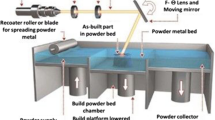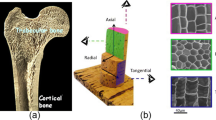Abstract
Tube spinning is a continuous bulk forming technique used to produce seamless tubes. In the last six decades, tube spinning process has been applied to a wide range of engineering products; especially in automotive, aerospace and nuclear industry. However, understanding of the process mechanics is limited. Key references were published about 60 years ago. This paper investigates tube spinning mechanics using physical trials and a numerical model. Mechanisms of material accumulation, wave, bell-mouth and diametral growth in tube spinning are investigated and their mechanisms explained. Numerical model results show that both equivalent plastic strain and plastic strain rate are localised in the region immediately under and ahead of the roller producing highly non-uniform strain distributions and that the process reaches steady-state at an early stage. The stress state is dominated by compressive normal stresses in all three directions.

















Similar content being viewed by others
References
Kalpakjian S, Schmid S (1990) Manufacturing engineering and technology 27
Runge M (1993) Spinning and flow forming. In Leifeld Metal Spinning
Wong CC, Dean TA, Lin J (2003) A review of spinning, shear forming and flow forming processes. Int J Mach Tools Manuf
Sariyarlioglu EC (2021) Analysis of tube spinning process. Master’s thesis, Istanbul Technical University, Istanbul, Turkey
Kalpakcioglu S (1964) Maximum reduction in power spinning of tubes. J Eng Mater Technol 49–54
Ram Mohan T, Mishra R (1970) Studies on power spinning of tubes. Int J Prod Res 351–364
Hayama M, Kudo H (1979a) Analysis of diametral growth and working forces in tube spinning. Bulletin of the JSME 22(167):776–784
Gur M, Tirosh J (1982) Plastic flow instability under compressive loading during shear spinning process. J Eng Mater Technol 104 (1), 104:17–22
Hayama M, Kudo H (1979b) Experimental study of tube spinning. Bulletin of the JSME 22(167):769–775
Roy MJ, Klassen RJ, Wood JT (2009) Evolution of plastic strain during a flow forming process. J Mater Process Technol
Roy MJ, Maijer DM, Klassen RJ, Wood JT, Schost E (2010) Analytical solution of the tooling/workpiece contact interface shape during a flow forming operation. J Mater Process Technol
Li Y, Wang J, Lu GD, Chen QS (2013) Three-dimensional finite element analysis of effects of roller intervals on tool forces and wall thickness in stagger spinning of thin-walled tube. Proc Inst Mech Eng C J Mech Eng Sci
Kemin X, Yan L, Xianming Z (1997) A study of the rational matching relationships amongst technical parameters in stagger spinning. J Mater Process Technol 69(1–3):167–171
Xu Y, Zhang SH, Li P, Yang K, Shan DB, Lu Y (2001) 3D rigid-plastic FEM numerical simulation on tube spinning. J Mater Process Technol
Hua FA, Yang YS, Zhang YN, Guo MH, Guo DY, Tong WH, Hu ZQ (2005) Three-dimensional finite element analysis of tube spinning. J Mater Process Technol
Parsa MH, Pazooki AM, Ahmadabadi MN (2009) Flow-forming and flow formability simulation. J Adv Manuf Technol
Kwiatkowski L (2012) Spinning, shear forming, and flow forming. In: Altan T, Tekkaya AE (eds) Sheet metal forming processes and applications. ASM International, pp 249–272
Kalpakjian S, Rajagopal S (1982) Spinning of tubes: a review. J Appl Metalw 2(3):211–223
Ge T, Wang J, Lu GD, Pan GJ (2015) A study of influence of interference phenomenon on stagger spinning of thin-walled tube. Proc Inst Mech Eng B J Eng Manuf
Funding
Repkon Machine Industry, Inc. (Istanbul, Turkey), provided the equipment and material for conducting the physical trials described in this paper.
Author information
Authors and Affiliations
Contributions
All three authors contributed to the study equally and read and approved this manuscript.
Corresponding author
Ethics declarations
Conflict of interest
The authors declare no competing interests.
Additional information
Publisher's Note
Springer Nature remains neutral with regard to jurisdictional claims in published maps and institutional affiliations.
This work is original and has not been published elsewhere nor it is currently under consideration for publication elsewhere.
Rights and permissions
Springer Nature or its licensor holds exclusive rights to this article under a publishing agreement with the author(s) or other rightsholder(s); author self-archiving of the accepted manuscript version of this article is solely governed by the terms of such publishing agreement and applicable law.
About this article
Cite this article
Sariyarlioglu, E.C., Music, O. & Bakkal, M. Backward tube spinning mechanics. Int J Adv Manuf Technol 123, 479–491 (2022). https://doi.org/10.1007/s00170-022-10100-x
Received:
Accepted:
Published:
Issue Date:
DOI: https://doi.org/10.1007/s00170-022-10100-x




